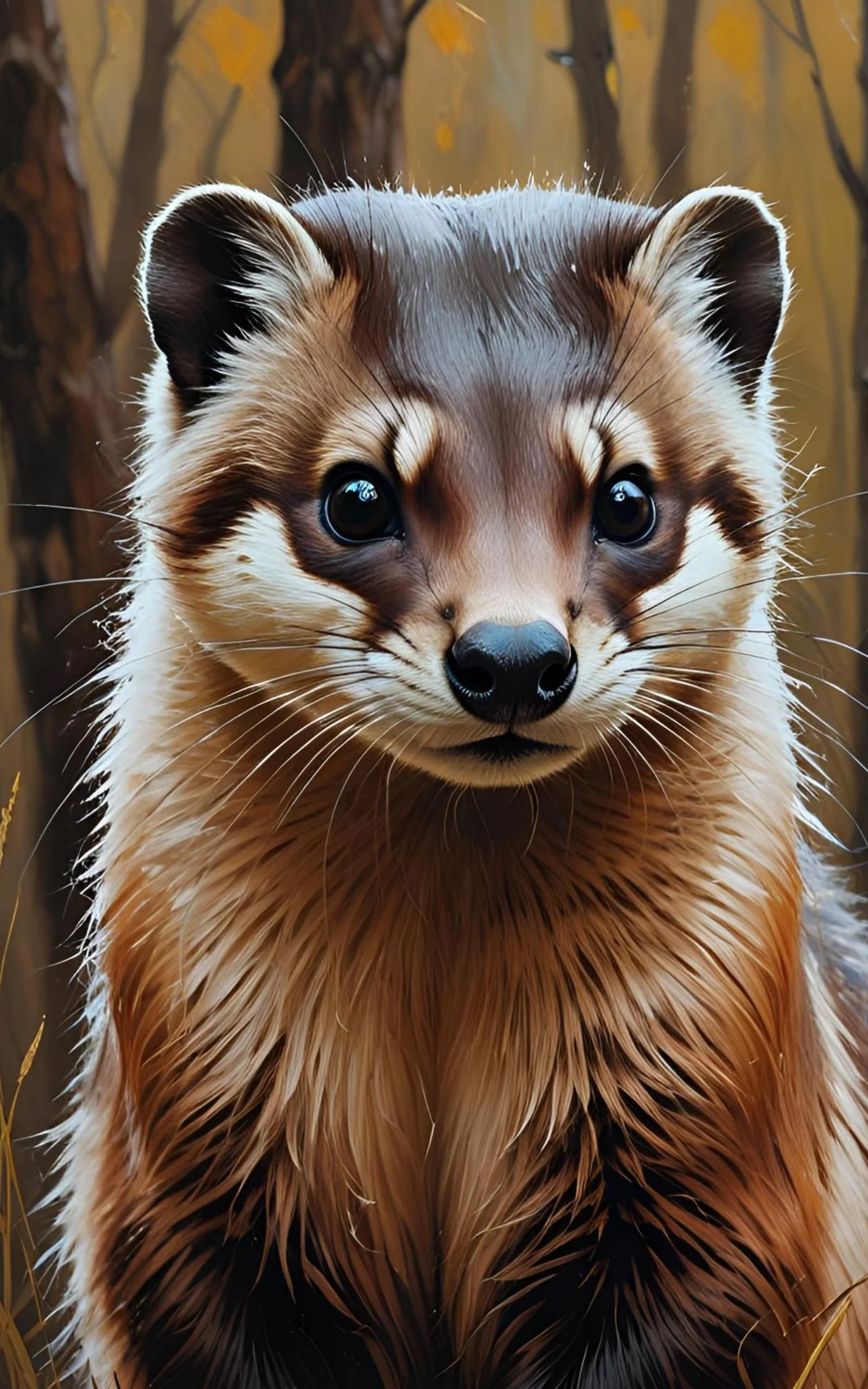Animal #08: The Sable – Dangerously Soft and Mildly Untrustworthy
The sable is what happens when a weasel tries to rebrand as a luxury item. With a pelt so soft it was once reserved for royalty, and a face that hovers somewhere between “Don’t trust me” and “You’re right not to,” the sable is as beautiful as it is morally ambiguous.
It looks like a forest spirit, moves like a thief, and lives like a creature that’s never once considered the consequences of its actions. Which is precisely why it deserves a spot in the top 10.
So What Is a Sable, Exactly?
The sable is a species of marten—a small, carnivorous mammal related to weasels, stoats, and other suspiciously slinky animals. Native to the forests of northern Asia, particularly Russia and parts of Mongolia, China, and the Korean peninsula, the sable has made a name for itself by being violently adorable and irritatingly elusive.
It is technically in the Mustelidae family, which, if you’re not familiar, is basically nature’s catch-all group for creatures that are small, fast, and questionably chaotic.
Imagine if a ferret got its life together, invested in a skincare routine, and still decided to live off-grid in the snow. That’s a sable.
The Coat That Launched a Thousand Traps
Let’s not dance around it: the sable is famous because of its fur.
That coat? Silky. Glossy. Deeply offensive in how soft it looks. Historically, it was the fur of choice for Russian aristocracy, European royals, and anyone trying to give “power and wealth, but make it woodland.” In fact, during the 17th century, Russian nobles were literally taxed in sables.
(Yes, taxed in fur. Imagine paying your landlord in mink and squirrel. Wild.)
Today, while fur farming and trapping are still unfortunately real things, conservation efforts have helped protect wild sable populations in certain areas. Which is good, because the world would be a darker place without these twitchy little drama weasels darting around the snow.
Small Body, Big Energy
Sables are shockingly small—usually just under 60 cm (including the tail)—but packed with the kind of energy you normally only see in caffeine-fuelled toddlers or raccoons who’ve found an open garbage bin.
They are excellent climbers, capable of scaling trees like it’s their full-time job, and they hunt everything from birds and rodents to berries and eggs. Their diet is basically a chaotic mix of protein and whatever looks vaguely edible, and they will not be shamed for it.
Despite their size, they are fierce little predators. If you’re a small woodland animal and you see a sable coming, your best bet is to make peace with your forest god.
How to Disappear Completely (But Make It Fashion)
Sables are masters of subtlety. They move quietly, live alone, and are rarely spotted unless they want to be. They build their dens in hollow trees, burrows, or under fallen logs, and while they aren’t exactly reclusive, they’re definitely not hosting brunch.
They prefer the cold, the quiet, and the kind of environment where your Wi-Fi signal gives up.
And while they aren’t technically nocturnal, they do tend to avoid people, noise, and anything resembling confrontation—so basically, they’re just well-dressed introverts trying to stay out of drama.
Parenthood, But With Bite
Sable mating season is... complicated. There’s delayed implantation (look it up—it’s weird), territorial scrapping, and a lot of seasonal moodiness. But once the babies are born, mothers become fiercely protective, raising their kits alone and teaching them the skills they’ll need to become suspicious, speedy woodland icons in their own right.
Kits stay with their mothers for about two years before leaving to start their own lives, which is longer than most of us got to stay on our parents’ health insurance.
The Sable Is a Vibe, Not a Pet…So they Want me to Believe
Sables are not meant to be domesticated, though some people (predictably) try. These attempts usually end with someone bleeding and a small fur blur disappearing into the drywall.
They are clever, restless, slightly vindictive, and 100% not designed for life inside a condo. Unless your décor includes a suspended treehouse and a small pile of forest bones, a sable is better admired from afar.
They are too chaotic for captivity. Too elegant for mainstream fame. Too fast for your Instagram.
Which is, of course, what makes them so perfect.








